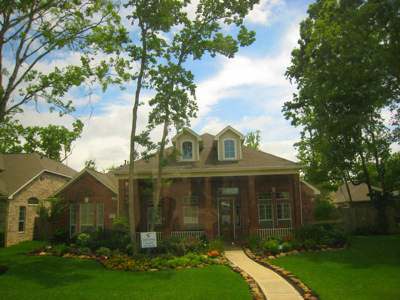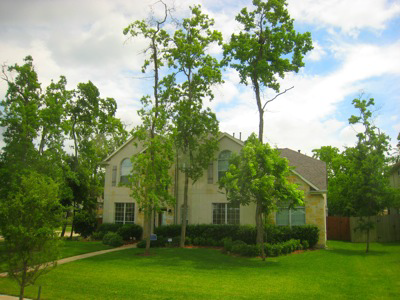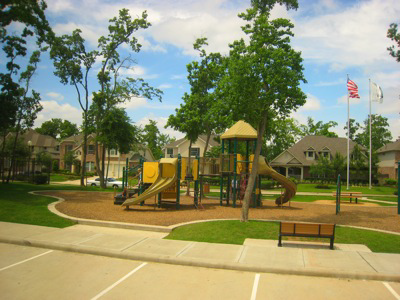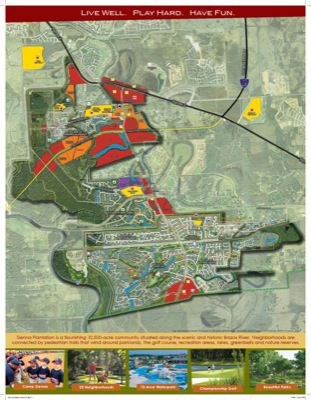No Light Rail in Vancouver!
Reprinted from The Antiplanner
Houston Through a Bus Window Part 2: Sienna
Click here for part 1.
After lunch at a typical Texas restaurant, our buses trundled out to Sienna Plantation,
one of more than two dozen master-
A map of Sienna Plantation. Click for a larger view.
Unlike parts of Houston, Sienna Plantation has separated the various uses. Multifamily
housing (orange) is close to the commercial and retail centers (red) — “you need
multifamily to support the retail” said our tour guide. The single-

This home is probably selling for about $180,000.
A price list indicate that homes start in “the $160s,” as realtors say, and go up to $2 million or so. Basic homes cost about $80 a square foot, roughly half as much as in Oregon and less than a quarter as much as most of California. Deed restrictions require, among other things, that exteriors not use wood siding — which seems strange to this Northwesterner where nearly all homes are made of wood.

This is probably somewhat more expensive, but two-
To provide sewer, water, and other utilities, Johnson created several municipal utility
districts, which repay the capital costs out of annual assessments on the homes.
Johnson also added a deed restriction to all homes requirng that one-

Sienna includes 36 parks and playgrounds, including a 12-
Johnson also created a Sienna homeowners association — in fact, several: one for each local neighborhood and an umbrella for the entire area. Until the development is complete, however, Johnson itself maintains controlling votes on the association boards. This is to protect it from residents who may want to pull up the drawbridge before the area is built out. When it is complete or nearly complete, Johnson will quietly hand over control to the homeowners.

School had just let out when we passed by one of the five schools in Sienna.
While home prices are much lower, property tax rates in the Houston area are higher, especially when the municipal utility district assessments are counted. Most Sienna homeowners pay about 3.5 percent of assessed value plus about $800 a year to the homeowners association. According to census data published by the National Association of Home Builders, Fort Bend County residents pay about twice the tax rates as homeowners in Oregon. But since a home of equal value is twice as big in Texas, effectively people pay about the same taxes for similarly sized homes.

The Fort Bend Parkway.
After finishing up our tour of Sienna, we took the Fort Bend Parkway, one of the
region’s many toll roads, back to Houston. This 6.2-
If I lived in Sienna, I am not sure I would ever want to go to Houston itself. But if I did, it would be nice to know I could get most of the way without facing any congestion.
I’ll provide more commentary in future posts.
Trackback • Posted in City planning

